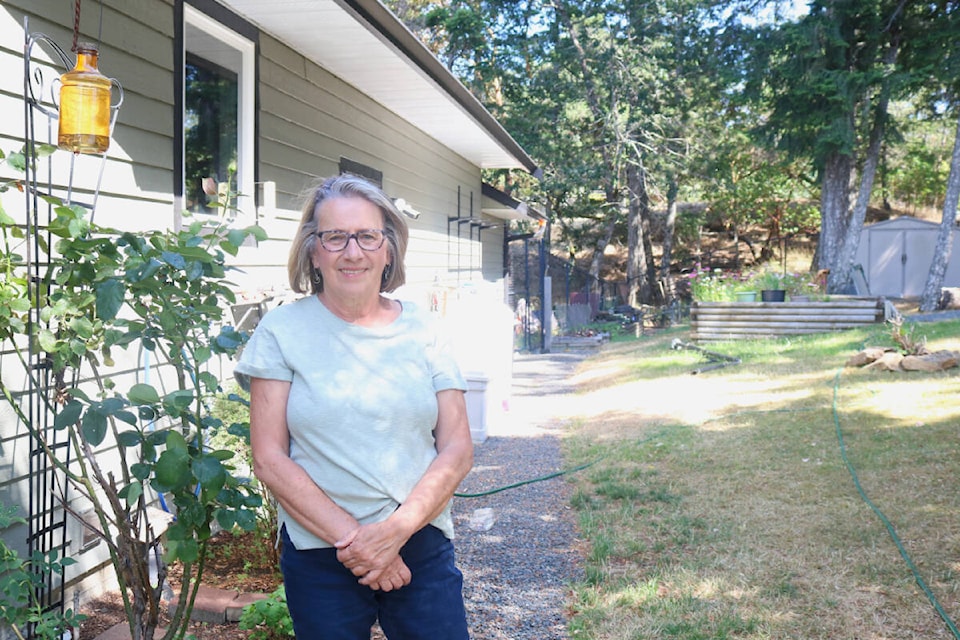Sharon Ford has lived on Saddleback Road in Metchosin for 20 years and had the same insurance company throughout that period.
Last year, she paid $4,200 for her home insurance. This year, it went up to $10,210 after her home was reclassified as a luxury property.
“Other than painting, it’s not a high-end home,” Ford said. “Nothing’s really changed. It’s not like we did a whole bunch of high-end renovations or anything like that. It’s a very basic home.”
Black Press Media spoke with several other Metchosin residents whose insurance premiums increased significantly this year. With over a quarter of Metchosin residents aged 65 and older (nearly 45 per cent are 55 and older), some had concerns about coping with the costs on a fixed income.
“I honestly, I’m not a young person anymore, but when I saw this I just about threw up because I can’t afford to go from paying $176 biweekly to $910 a month,” said Ford.
Across the country, insurance costs are being pushed up by two main factors, rising costs and risk, according to Rob de Pruis, national director of consumer and industry relations with the Insurance Bureau of Canada. Inflation, supply chain issues and labour shortages are driving up costs of replacing damage to homes, and therefore driving up insurance premiums.
The second major factor is risk, fuelled by natural disasters and climate change.
According to the Insurance Bureau of Canada, insurance companies paid out $3.1 billion because of natural disasters, up from the average of $2.2 billion for the previous decade. That’s also the third highest year for payouts ever, after 2013 when flooding in Alberta and Ontario saw $3.87 billion paid out, and 2016, the year of the Fort McMurray fires, when $5.96 billion was paid out. Between 2001 and 2010, that number on average annually was $632 million.
“Canada is getting to be a riskier place to do business,” de Pruis said. “Ultimately, we’re working with the federal government because we have to improve our overall climate defenses.”
de Pruis said the insurance industry is calling for more investment in infrastructure and climate mitigation to help combat the impacts of climate change. Predictions have also shifted of the damage caused by a major earthquake in B.C., de Pruis noted.
Back in May, the federal government released a new assessment that said the damage caused by a one-in-500-year 9.0-magnitude earthquake could end up costing Canada $75 billion. The same report found Canada had significant shortfalls on 23 of 34 earthquake response capabilities.
READ MORE: Province acknowledges more needs to be done to prepare B.C. for earthquakes
EARTHQUAKE RISK: Climate change is impacting earthquake risks, federal report finds
Ford got lucky, she was able to shop around and find new coverage that was actually cheaper than her original home insurance plan. Like her, de Pruis encouraged people to shop around, review their policy and ask about trimming any optional coverage items don’t need.
“Just because you’ve been with the company for 20 years, that doesn’t mean you’re getting the best price for that particular product, just like getting your eggs at the local convenience store. You take a three-minute drive down to the larger grocery chain and you might be able to get a lot better price on that.”
~ with files by Wolf Depner
ALSO READ: ‘Pass the torch’: Iconic Metchosin cafe sold after 36 years of ownership



